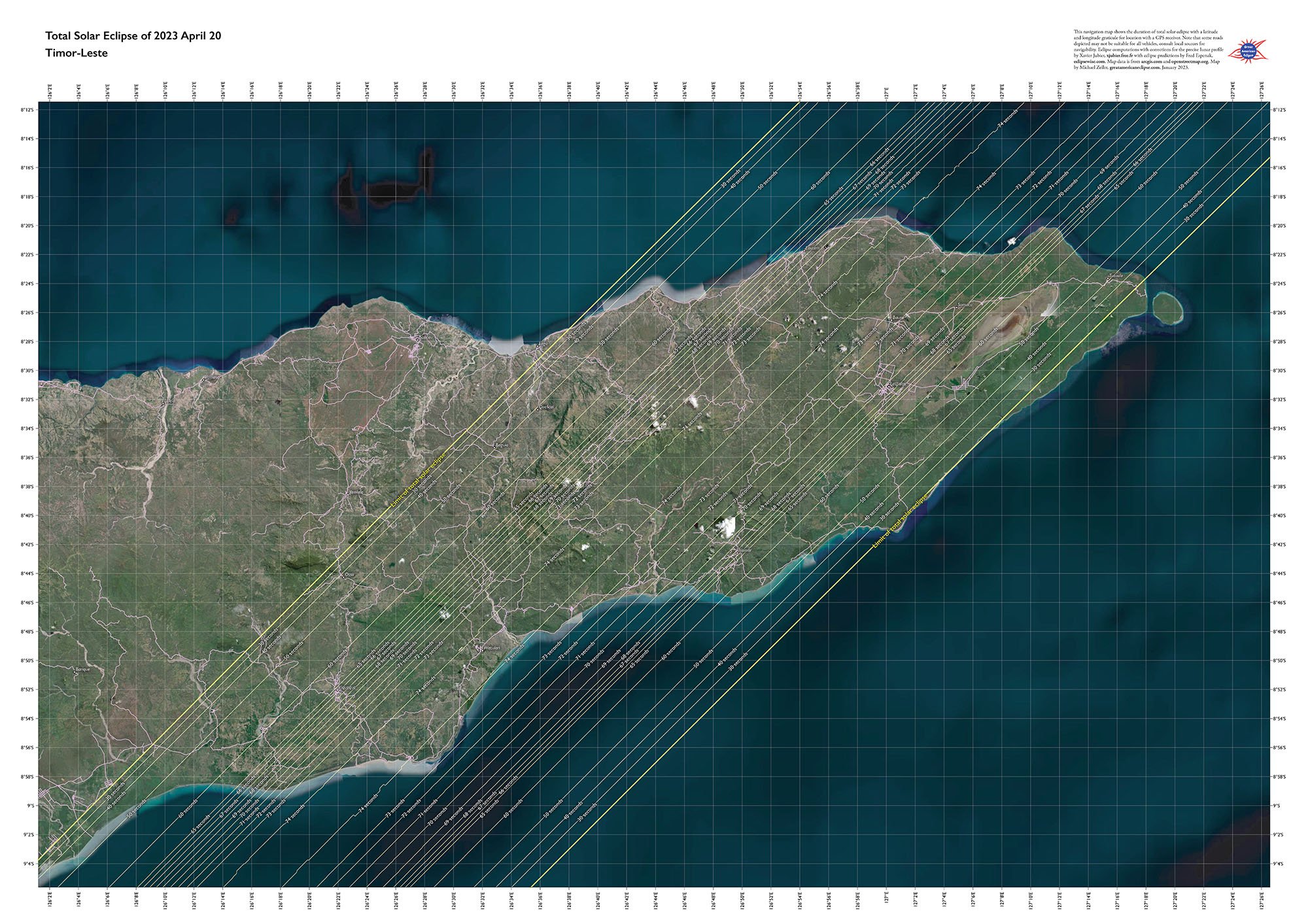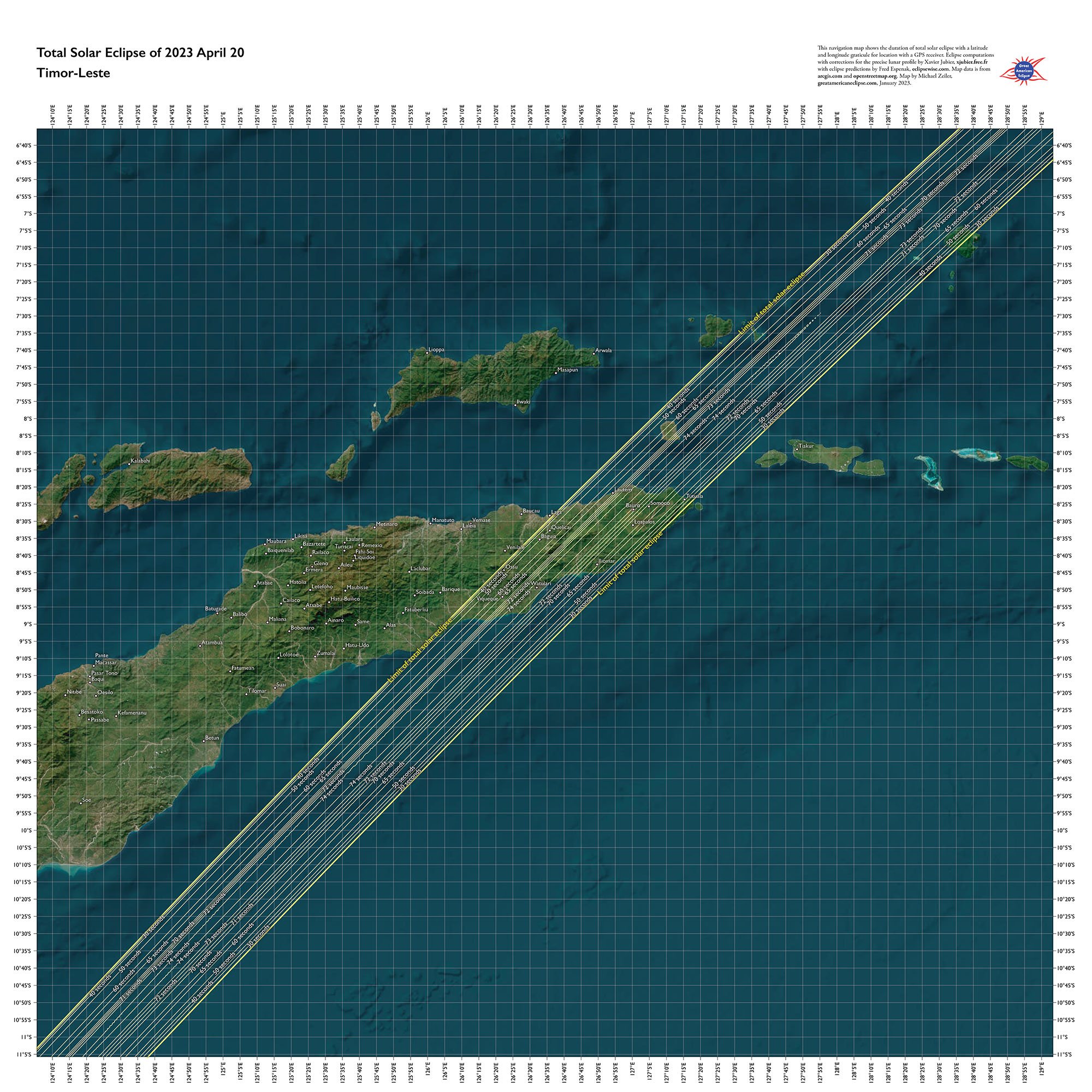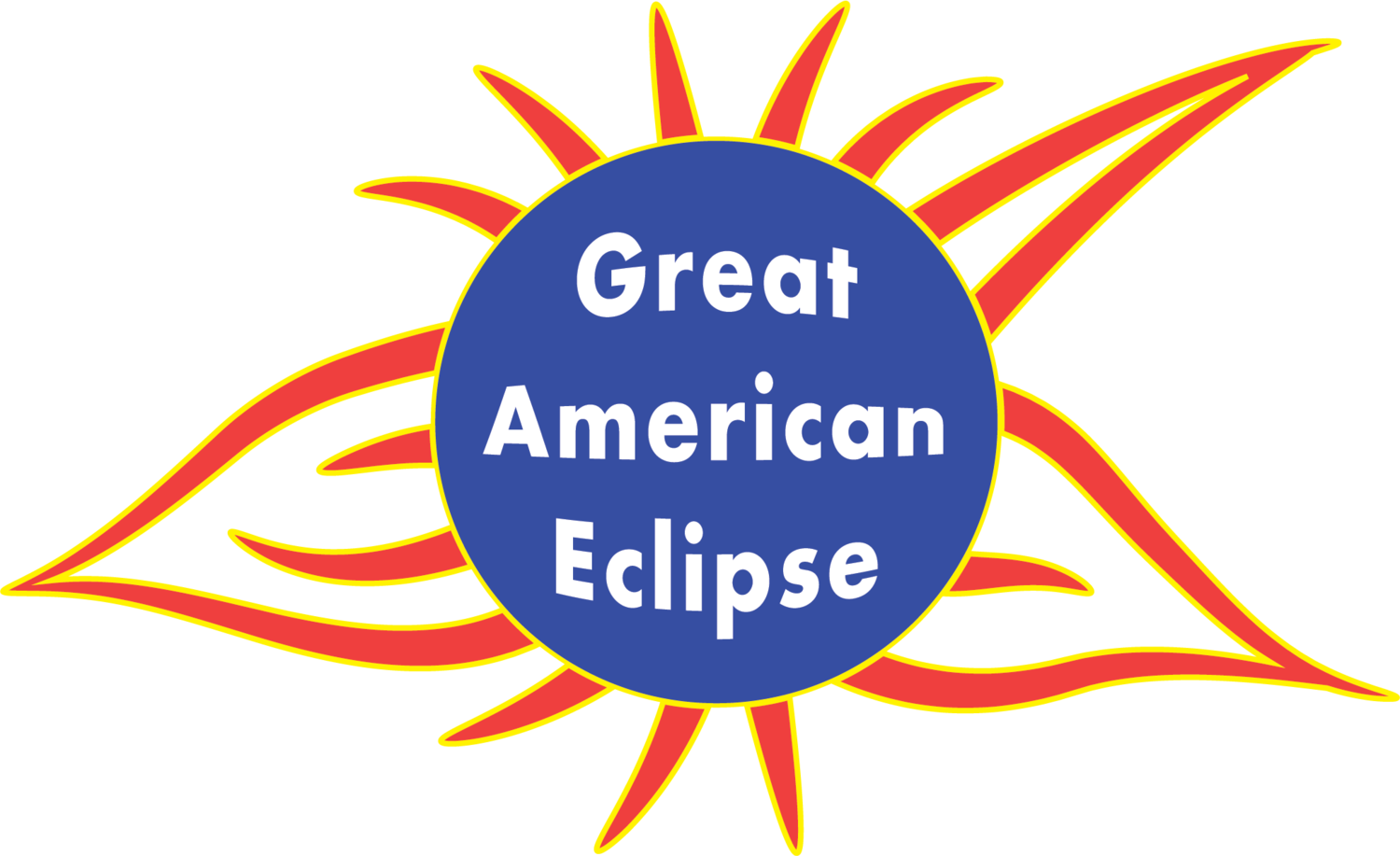Annular-Total Solar Eclipse of April 20, 2023
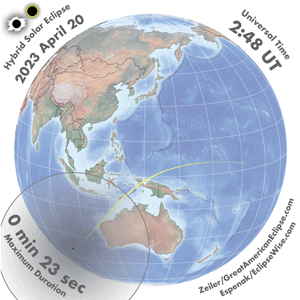
This solar eclipse begins at sunrise in the southern Indian Ocean and visits only three countries; Australia, Timor-Leste, and Indonesia. The eclipse ends at sunset in the Pacific Ocean just above the equator near the International Date Line.
What makes this eclipse different from most, is that it begins as an annular solar eclipse, quickly transitions to a total solar eclipse, and ends as an annular solar eclipse again. The partial phases are the same as any other annular or total solar eclipse. This type of solar eclipse is called an annular-total or hybrid solar eclipse. The maximum duration of total phase of solar eclipse is 1 minute and 16 seconds near Timor-Leste. You can find our certified safe eclipse glasses here.
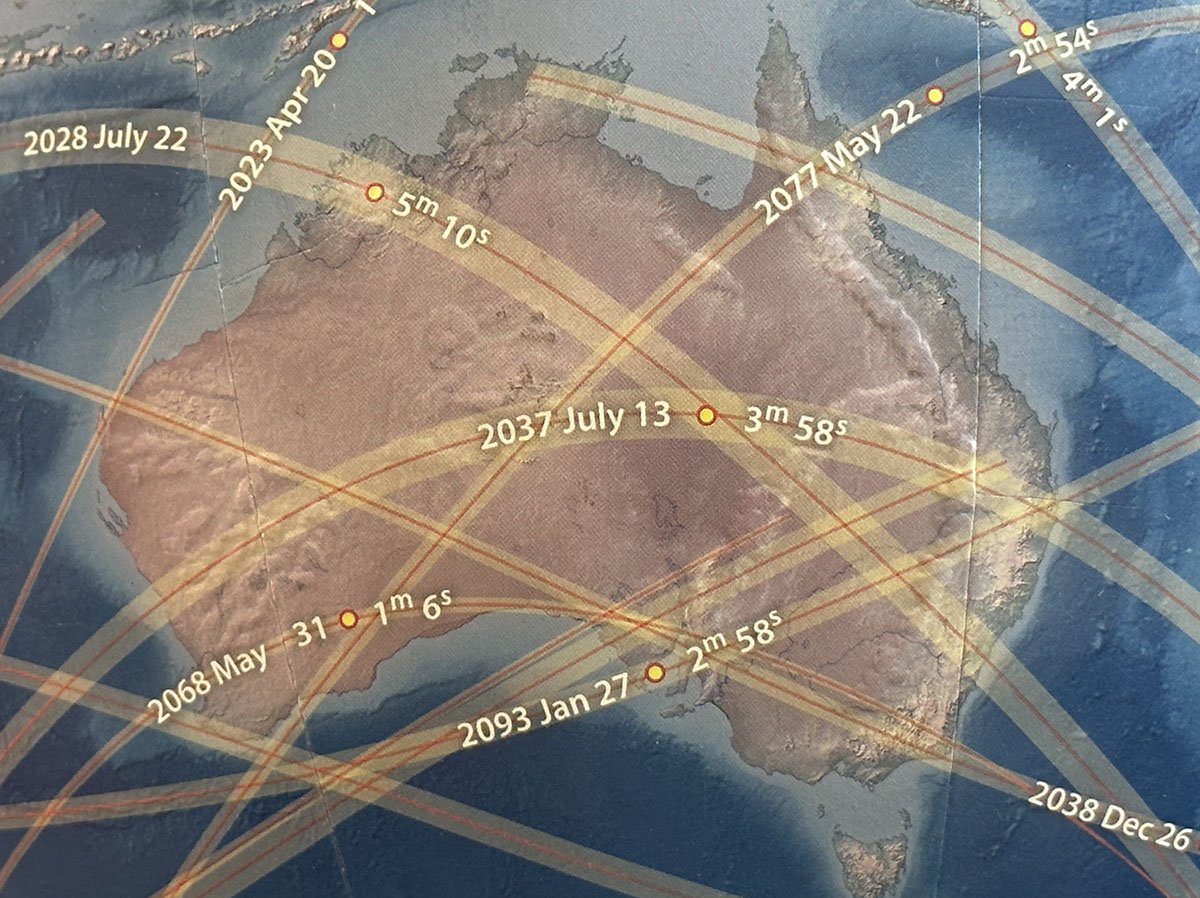
Detail from our eclipse globe, greatamericaneclipse.com/eclipse-maps-and-globe/eclipseglobe
This annular-total solar eclipse is the first of a remarkable series that Australia will enjoy in the coming decades. After this eclipse, the Moon’s shadow will again visit Australia in 2028, 2030, 2037, 2038, 2066, 2068, 2077, and 2093.
The inner shadow of the Moon (umbra) first touches land at the Ningaloo Coast of northwestern Australia, a World Heritage Site with rich wildlife including coral reefs, whale sharks, reef sharks, and manta rays at sea, and emus, kangaroos, and tortoises on land. Within Australia, only the Exmouth peninsula and several islands are within the path of total solar eclipse.
The Moon’s shadow then races to the Democratic Republic of Timor-Leste where eclipse visitors on boats can enjoy snorkeling and scuba diving. The point of maximum solar eclipse is close to Timor-Leste.
Next, the eclipse crosses several islands of Indonesia and the provinces of West Papua and Papua in the easternmost extent of Indonesia. The last landfall of eclipse is at the Shouten Islands and the path later comes very close to several islands of the Micronesian archipelago.
The two maps below show the narrow path of the eclipse over the Exmouth peninsula of Western Australia, the nation of Timor-Leste, and the Papua and West Papua provinces of Indonesia. These maps are from our Atlas of Solar Eclipses - 2020 to 2045.

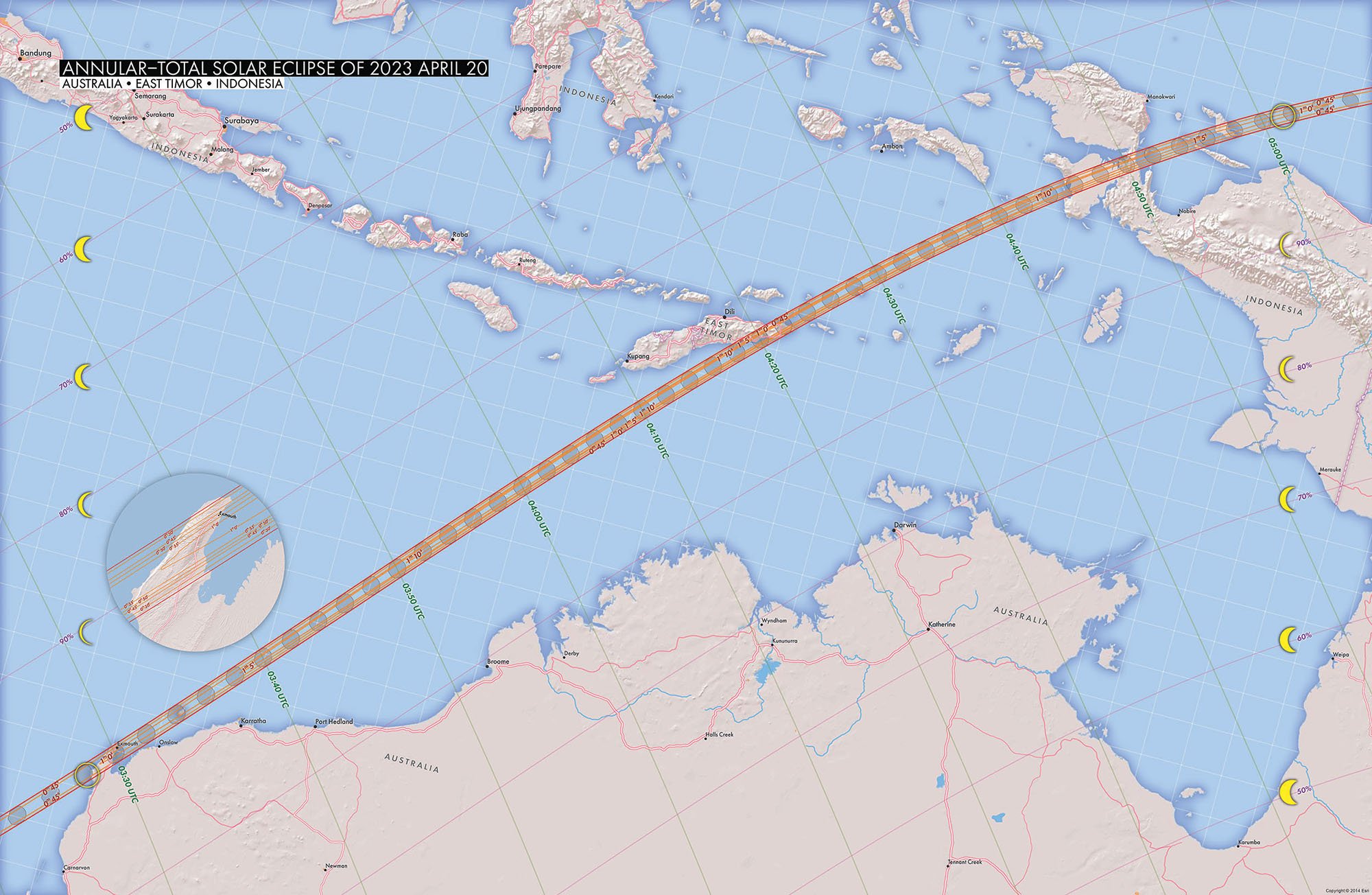
You’ll find more details on this eclipse at these recommended sites: eclipsewise.com/solar/SEprime/2001-2100/SE2023Apr20Hprime.html and xjubier.free.fr/en/site_pages/solar_eclipses/ASE_2023_GoogleMapFull.html. For a summary of weather prospects, consult the essential website eclipsophile.com/hse2023/. Further detailed information on local conditions in the Exmouth area can be found at www.thebackyarduniverse.com.au/eclipses/eclipse-2023.htm
Navigation maps
These detailed eclipse maps are designed for location with GPS receivers. Because the path of this eclipse is relatively narrow, these maps will be useful for finding a location with maximum duration of totality, especially at sea. Note that these maps incorporate corrections for the actual lunar limb, which can affect observed durations of totality by a few seconds. Also, the distance between limit lines on these maps is a bit shorter than those shown on most eclipse maps which are computed with classical models of a smooth lunar limb.
These maps below are poster size with considerable detail. To view the maps at full resolution, you may download poster-size JPGs here. These maps may be shared for non-commercial use on websites and social media with a credit and live link to Michael Zeiler, GreatAmericanEclipse.com.


